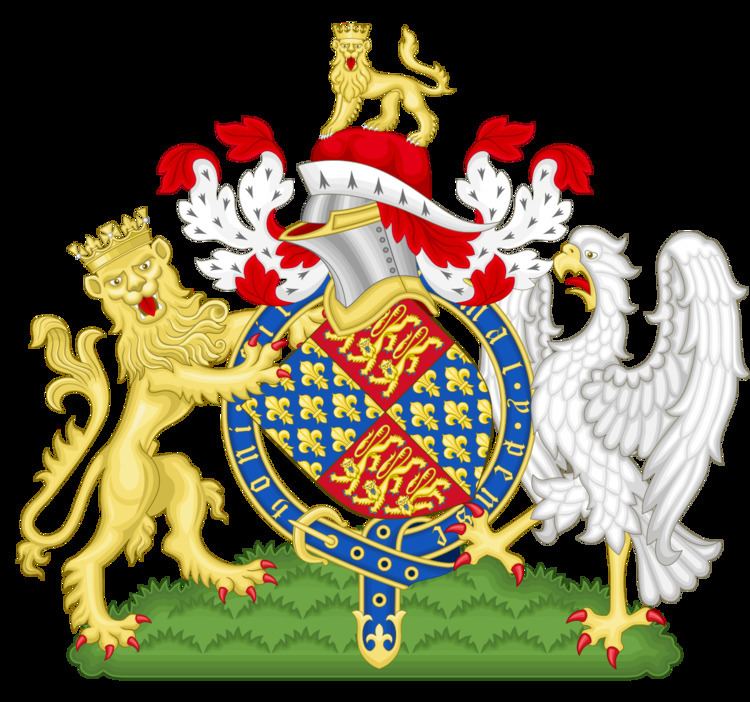Citation 25 Edw 3 St 5 c 2 | ||
 | ||
Long title Declaration what Offences shall be adjudged Treason. | ||
The Treason Act 1351 is an Act of the Parliament of England which codified and curtailed the common law offence of treason. No new offences were created by the statute. It is one of the earliest English statutes still in force, although it has been very significantly amended. It was extended to Ireland in 1495 and to Scotland in 1708. The Act was passed at Westminster in the Hilary term of 1351, in the 25th year of the reign of Edward III and was entitled "A Declaration which Offences shall be adjudged Treason". It was passed to clarify precisely what was treason, as the definition under common law had been expanded rapidly by the courts until its scope was controversially wide. The Act was last used to prosecute William Joyce in 1945 for collaborating with Germany in World War II.
Contents
The Act is still in force in the United Kingdom. It is also still in force in some former British colonies, including New South Wales. Like other laws of the time, it was written in Norman French.
Content
The Act distinguishes two varieties of treason: high treason and petty treason (or petit treason), the first being disloyalty to the Sovereign, and the second being disloyalty to a subject. The practical distinction was the consequence of being convicted: for a high treason, the penalty was death by hanging, drawing and quartering (for a man) or drawing and burning (for a woman), and the traitor's property would escheat to the Crown; in the case of a petty treason the penalty was drawing and hanging without quartering, or burning without drawing; and property escheated only to the traitor's immediate lord.
A person was guilty of high treason under the Act if they:
The penalty for counterfeiting coins was the same as for petty treason. The offence had previously been called petty treason, before the Act elevated it to high treason.
Under the Act petty treason was the murder of one's lawful superior: that is if a servant killed his master or his master's wife, a wife killed her husband or a clergyman killed his prelate. This offence was abolished in 1828.
The Act originally envisaged that further forms of treason would arise that would not be covered by the Act, so it legislated for this possibility. The words from "Et si per cas" onwards have been translated as:
And because that many other like Cases of Treason may happen in Time to come, which a Man cannot think nor declare at this present Time; it is accorded, That if any other Case, supposed Treason, which is not above specified, doth happen before any Justices, the Justices shall tarry without any going to Judgement of the Treason till the Cause be shewed and declared before the King and his Parliament, whether it ought to be judged Treason or other Felony.
The Act in Scotland
Following the union of England and Scotland by the Acts of Union 1707, Scotland continued to have its own treason laws until the Treason Act 1708 abolished Scottish treason law and extended English treason law to Scotland. This Act also made it treason to counterfeit the Great Seal of Scotland, and to kill the Scottish Lords of Session and Lords of Justiciary (in addition to forging the British – formerly English – seal, and killing English judges). However while in England and Ireland forgery of the seal of Great Britain ceased to be treason under the Forgery Act 1861, this Act did not apply to Scotland. Also, forging the Scottish seal is still treason in Scotland, but has not been treason in England or Ireland since 1861.
The 1351 Act still applies in Scotland today, and is a reserved matter which the Scottish Parliament has no power to modify.
Interpretation
During the trial of Roger Casement, who in 1916 was accused of collaborating with Germany during World War I, the defence argued that the Act applied only to activities carried out on British soil while Casement committed the acts of collaboration outside Britain. However, closer reading of the originally unpunctuated medieval document allowed for a broader interpretation, leading to the accusation that Casement was "hanged by a comma". The court decided that a comma should be read in the text, crucially widening the sense so that "in the realm or elsewhere" meant where acts were done and not just where the "King's enemies" might be.
Repeals
The words from "Et si per cas" onwards were repealed by section 10(2) of, and Part I of Schedule 3 to, the Criminal Law Act 1967 and Part I of Schedule 2 to the Criminal Law Act (Northern Ireland) 1967.
The Act was repealed in the Republic of Ireland on 16 May 1983, and in New Zealand on 1 January 1962.
